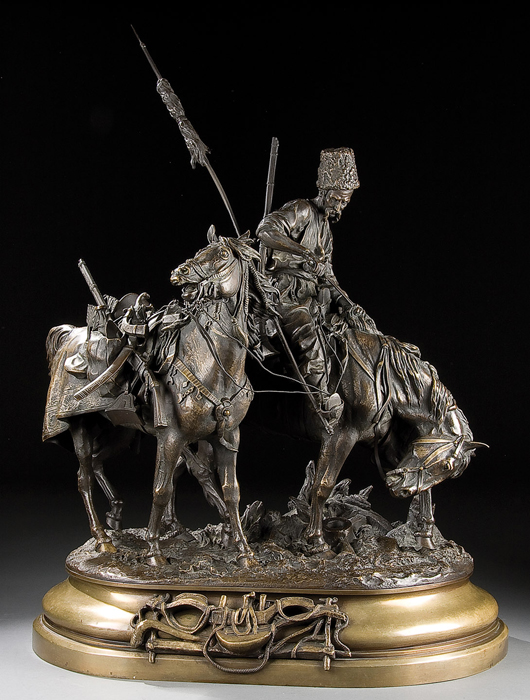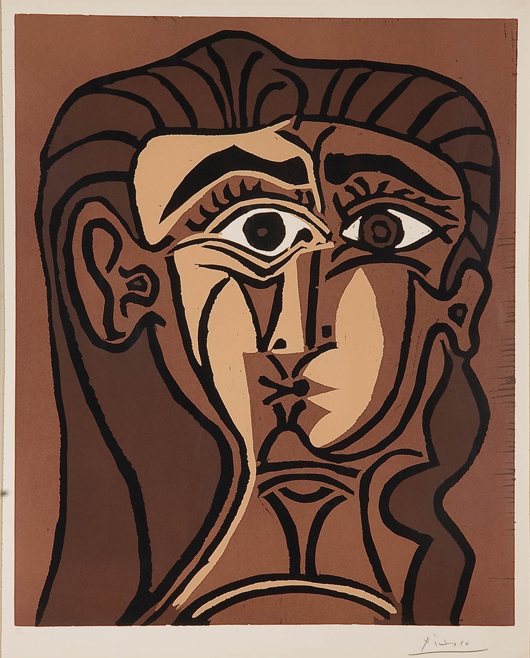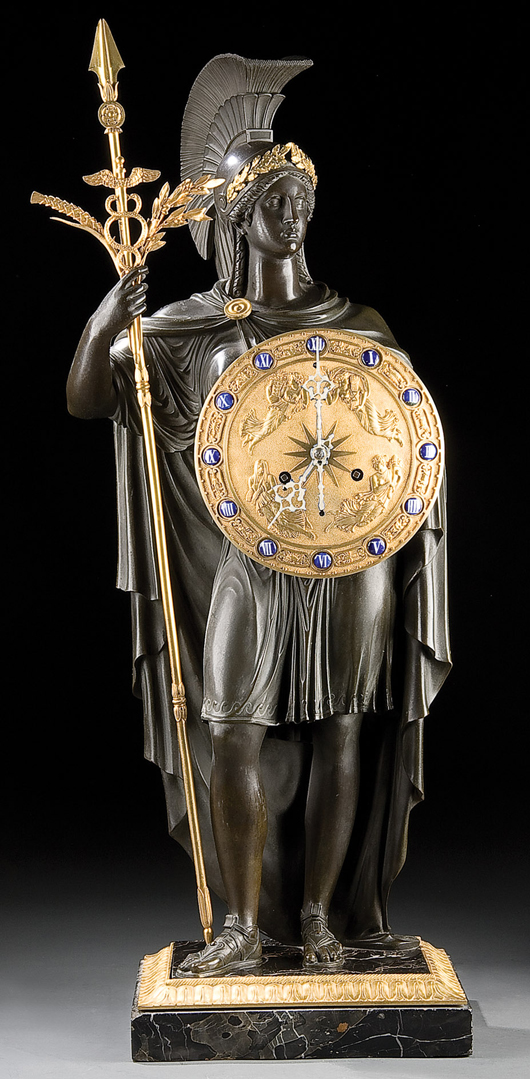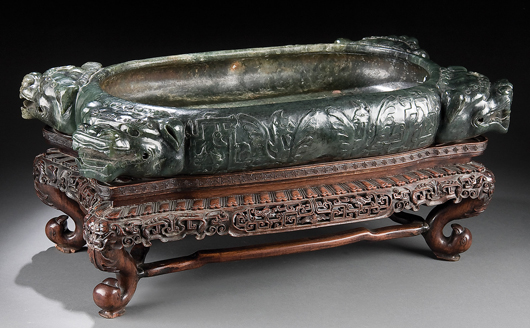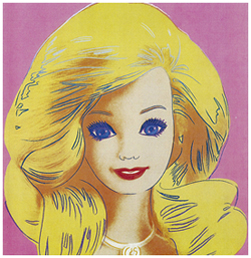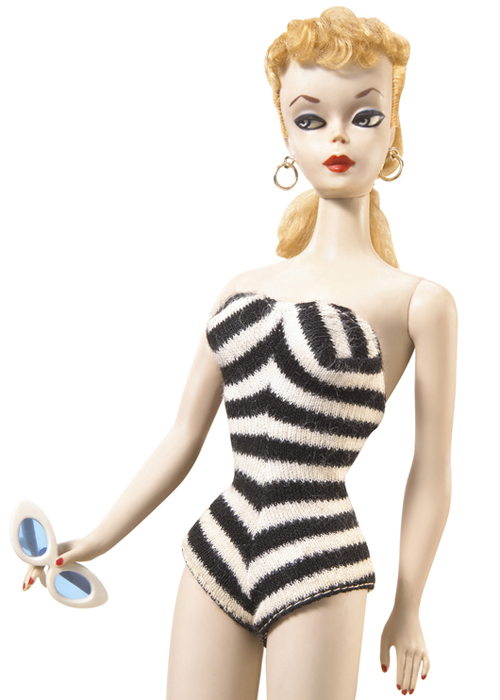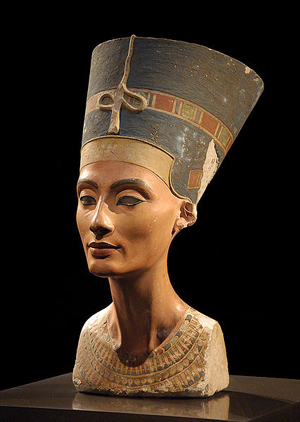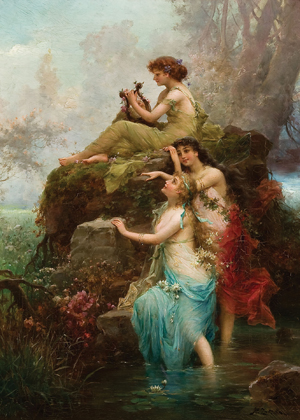
CEDAR FALLS, Iowa – If Jackson’s International Auctioneers were searching for a new motto, they might aptly choose the following: “Neither record snow, blowing winds nor frigid temperatures will prevent us from having a successful auction.” Indeed such was the case Dec. 8 and 9 at Jackson’s, which witnessed a supercharged auction amid a record 14-inch snowfall combined with wind gusts of 50 miles an hour and temperatures plunging below zero.
It was perhaps the unique mix of material (Chinese, Russian and Picassos) that in turn created the perfect storm of bidders who helped raise prices and disolve any thoughts of a less than stellar auction. Gross sales totaled more than $2 million.
“I have to hand it to my staff” said Jackson’s President and CEO James Jackson. “As our client services director Jessi Brogan said the day before the storm, ‘We’d all better prepare to get here and launch this thing because people in Moscow, Peking, London, Paris and Rome don’t know anything about this storm and further still could care less.’” Jackson continued, “Just to be on the safe side we hired a snow plow truck to pick up employees and deliver them to the gallery despite the fact that every school, airport, store and factory within a 300 mile radius was shut down. None of us expected many people, if any, to actually show up but indeed there were over two dozen die-hard auction-goers who somehow made it to our gallery including two from China, one from Chicago, two from New York, one from Kansas City, and another from Dallas as well as one from Minneapolis.”
The auction began with more than 600 bidders having preregistered, which produced a steady sales pace throughout each session. Phone lines were busy with stranded bidders calling in to arrange phone bidding or leave bids, and LiveAuctioneers.com provided Internet live bidding.
The sale opened with a variety of European art including lot no. 1, a lovely oil on canvas portrait of a young woman by British artist William Clarke Wontner (1857-1930) that sold for $45,600. That was followed by an alluring oil on canvas by Austrian artist Hans Zatzka (1859-1945) titled Symphony of the Water Nymphs which drew wide interest including 15 phone lines. Estimated at $12,000-$18,000, it finished at $44,400, selling to a New York buyer. A charming oil on canvas by French artist Henri Schlesinger (1814-1893) titled A Ride in the Park brought $26,400, which was a good bit over the high estimate. Perhaps the biggest surprise in European paintings was the 29- by 44-inch oil on canvas unsigned Venetian scene attributed to British artist John Joseph Hughes (1820-1909). Estimated at $1,000-$2,000, the painting ended up selling to a buyer from Florida for $26,400. Other European works of note included a 13th-century Limoges enamel corpus Christi mounted to a later copper gilt cross which sold for $15,600. A lovely bronze figure of a water nymph by Italian sculpture Luca Madarassi (1848-1919) sold for $10,200.00 against an estimate of $3,000-$5,000. And a pair of 13- by 18-inch oil on canvas Paris street scenes by French artist Antoine Blanchard (1910-1988) sold for $15,600.
Next up was a small but diverse group of Russian items with the highlight being a beautiful bronze by Evgeny Lansere (1848-1886) titled Zaporozhets after the Battle. It finished at more than twice the high estimates coming in at $33,600. A few other Russian works of note included a small (9 by 12 inches) landscape by Mikhail Klodt (1832-1902) that sold for $13,200. A Russian snow scene by Dmitri Nalbandian (1906-1993) did $12,000, and a folding iconostasis finished at $9,600. A 13-inch bronze of an armless female torso by Moissey Kogan (1879-1942) also sold for $9,600 and an 8-inch-diameter steel plate commemorating the coronation of Czar Alexander III sold for $3,600.
The highlight of a group of modern works on paper from a Las Vegas, Nev., collection was a 1962 linocut print by Picasso titled Tete de Femme, which that measured 25 inches by 20 inches. Estimated at $40,000-$60,000, the print drew wide interest finishing at $81,600. Other Picasso linocuts inculded Jacqueline Lisante, 1964, measuring 25 inches by 20 inches, $60,000; Femme au Chapeau, 1962, in colors, measuring 13 inches by 10 inches, $45,600, and Picador et Taureau, 1959, finished at $36,000.
Other modern prints worthy of mention include Marc Chagall’s color lithograph titled Chloes Judgment,1960, from Daphins and Chloe, measuring 16 inches by 25 inches, which sold to a buyer in New York for $21,600. Another Chagall color lithograph, Le Bouquet Rose, 1980, sold for $20,400, which was followed by Les Lilas, also a color lithograph by Chagall, sold for $18,000.
The second session opened with American art including a fresh to the market snow scene by Ernest Lawson (1873-1939). The 18- by 24-inch oil on canvas sold for $45,600. That was followed by a still-life by Iowa artist Marvin Cone (1891-1964), which sold above the high estimate bringing $31,200. A typical Normandy river landscape by American artist George Ames Aldrich (1872-1941) sold for $11,400. A group of three small oil sketches by Chicago artist Walter Krawiec, each measuring 11 inches by 14 inches, totaled $9,000 against an estimate of $1,500-$2,500. An oil on Masonite pinup girl by American artist William Metcalf brought $8,400, and Thomas Hart Benton’s lithograph Frankie and Johnnie sold for $7,200. An interesting bust of titled The Head of David-after Michelangelo, by American artist Richmond Barthe (1901-1989) did well selling for $6,600 against an estimate of $1,000-$2,000, and a 12- by 20-inch oil by Arthur Parton (1842-1914) depicting raging rapids sold for $5,280.
Next were American and European glassware, porcelain and decorative arts. The first lot, a Tiffany Pomegranate lamp sold for $16,800. That was followed by a pot metal figural lamp modeled after a work by Oscar Bach and containing a Steuben globe shade. It sold for $4,800. A 5-inch miniature Daum Nancy snow scene vase sold for $2,000, and a Legras Indiana cameo vase did $3,120. A 16-inch KPM plaque depicting the male saint Rodriguez after the painting by Murillo sold for $6,000, a 6- by 5-inch oval KPM plaque of a Greek girl sold for $4,000. A lovely pair of Meissen cupid figurines made slightly over $5,000, and a Meissen figural grouping of musicians did $4,800. A large Zsolnay vase titled Allegory of the Flood modeled by Lajos Mack and measuring 25 inches drew wide interest, selling to a buyer from New York for $10,800.
Decorative arts and furnishings saw a good amount of action as well with a French Empire period bronze figural clock tripling the high estimate bringing $18,000. A pair of elephant tusks deacessioned from an Iowa museum also sold for $18,000. A Louis XVI-style mahogany and ormolu mounted curved glass vitrine sold to a buyer from Los Angeles for $22,800 followed by a similarly decorated gilt bronze and vernis mounted side cabinet that sold $18,000 against an estimate of $2,000-$4,000.
By far the most super charged bidding was in the Oriental or Chinese section with most every lot receiving active bids from the floor, phone, Internet and absentee bid department. The highlight of Chinese art was a carved jade water basin cataloged as 19th century with a question mark. The 3-inch-deep, 21-inch-long and 11-inch-wide carved stone basin carried an estimate of only $1,500-$2,000, but ended up selling $55,200 to a phone bidder from China. That was followed by a 16-inch carved jade urn also cataloged as 19th century and with later regain seal of Qianlong. Estimated at $600-$900 it too sold to the phone for $14,400.00. Next to sell was a Chinese export ceramic fishbowl measuring 18 inches in height, and although with a hairline crack in the base, still sold for $18,000 against an estimate of $800-$1,200. A pair of Chinese cloisonné vases with floral designs, each circa 1900 and about 12 inches in height, sold for $8,400. A gouache on card painting by well-known Indian artist Jamini Roy (1887-1972) sold for $16,800. A pair of Chinese carved ivory puzzle or mystery balls that sold to a collector from Boston for $10,000.
For complete auction results with illustrations or information on how to consign items visit Jackson’s website at www.jacksonsauction.com.
ADDITIONAL LOTS OF NOTE
